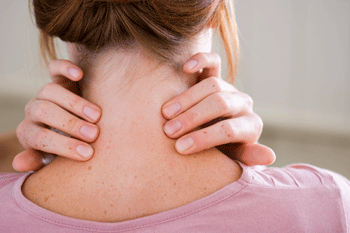
Laser therapy may help patients return to work sooner following whiplash injury, according to a recent study.
Low-level laser therapy is a non-invasive treatment used by some chiropractors and other manual therapists to ease musculoskeletal pain. The therapy involves the delivery of the low levels of red and infrared light directly into the injured area. This is thought to alter cellular function, stimulate the mitochondria to produce ATP, and activate a series of natural anti-inflammatory and analgesic reactions in the body.
Previous research has suggested the low-level laser therapy may be beneficial in treating patients with arthritis, joint disorders, and neck pain. Now new research suggests that a specific type of laser therapy, called high-power laser therapy, is effective for managing whiplash pain.
In the study, Italian researchers compared the effectiveness of high-power laser therapy (HPLT) to a standard course of physiotherapy treatment. The study included 132 patients with whiplash who had been injured in an auto collision within the previous month, and were randomly assigned to a laser therapy or a physical rehabilitation group.
After six weeks of treatment, both groups had significant reductions in pain but the ones receiving laser therapy had better results. On average, patients' pain scores started at approximately 71 on a visual analogue scale. That pain score decreased to 20 in the HPLT group and 34 in the standard PT group. The laser therapy group was back to work within 54 days of treatment, compared to 82 days in the standard PT group.
While more research is needed to confirm these results, the authors concluded that high-power laser therapy treatment enabled patients to return to work earlier in this study.
"HPLT is appreciated being a non-invasive, non-aggressive, painless treatment with no complications," they concluded.
Laser therapy isn't the only non-invasive treatment option available for patients with whiplash. Chiropractic adjustments have also been proven to be effective for the majority of whiplash patients.
Reference
Conforti M and Fachinetti GP. High power laser therapy treatment compared to simple segmental physical rehabilitation in whiplash injuries (1° and 2° grade of the Quebec Task Force classification) involving muscles and ligaments. Muscle, Ligaments, and Tendons Journal 2013; 3(2): 106–111.